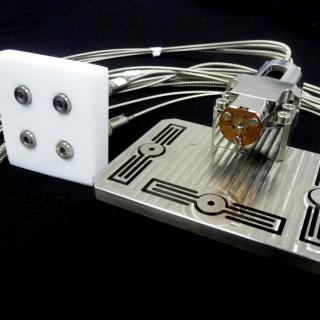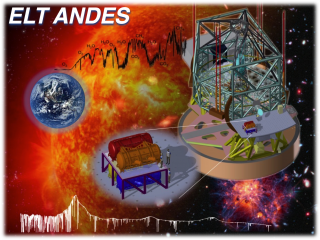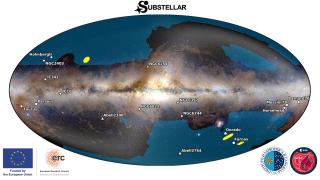General
ARES (High Spectral Resolution) is a coordinated project which attempt to join and consolidate the efforts on instrument developments at high spectral resolution within the IAC. The goal is to launch the scientific programs that the IAC carries out on the search and characterization of exoplanets, in particular Earth-like exoplanets, on the evolution of the stellar populations of our Galaxy and on the field of cosmology and fundamental physics using high-resolution ultra-stable spectroscopy. ARES incorporates specific actions of great impact in the design and development of instrumentation of new generation for astronomical telescope facilities in the European Southern Observatory (ESO), the Observatorio del Roque de Los Muchachos, and the observatorio de Calar Alto: ESPRESSO@8.2m-VLT, HORuS@10.4m-GTC, HARPS3@2.5m-INT, NIRPS@3.6m-ESO, ANDES@39m-E-ELT, CARMENES@3.5m-CalarAlto, and HRS@10.4m-GTC. The project ARES will allow to carry out technical actions and will provide access to the guaranteed scientific exploitation in : (a) ESPRESSO: will, among other scientific cases, allow the detection and characterization of terrestrial planets in the habitable zone around nearby GKM stars of the Southern hemisphere. (b) HORuS: will characterize the chemistry of the stars of the Milky Way. (c) NIRPS: will be particularly efficient in the detection and characterization of low-mass planets orbiting M-dwarf stars in the southern hemisphere. The IAC is developing the design of fiber link. (d) HARPS3: will focus on star-planet systems similar to the Sun-Earth system. The IAC is carrying out the design of the rooms of thermal insulation of the spectrograph. (e) ANDES: will study, among other scientific cases, the atmospheres of exoplanets from Neptunes to Earths, including those in habitable zone, with the aim of detecting signs of life on rocky planets. The IAC is participating in the phase A of the design of the visible arm of this spectrograph and the fiber link of the instrument. (f) CARMENES: will search for low-mass planets orbiting M dwarfs in the northern hemisphere, with the aim of finding Earth-like planets in the habitable zone. (g) HRS: to follow the development of the high-resolution spectrograph and high-stability for the GTC telescope envisaged for the coming years.
Members
Results
-The participation of the IAC in the consortium for the design and development of the ultra-stable spectrograph ESPRESSO (Pepe et al. 2014, AN, 335, 8) has been been successful. During the first part of 2017 the process of preliminar acceptance in Europe (PAE) of the instrument by the European southern observatory (ESO) will be executed and the instrument will be shifted to Chile for the instalation, first light and first observing tests at the Coudé lab of the 8.2m-VLT telescopes at Paranal Observatory (ESO, Chile). -We continue participating in the development of the laser frequency comb (LFC) where we have demonstrated the short-term repeatability of 2.5 cm/s (Wilken et al. 2012, Nature, 485, 611), reaching approximately 1 cm/s in the more recent calibration tests (Probst et al. 2016, SPIE, 9908, 64).
Scientific activity
Related publications







